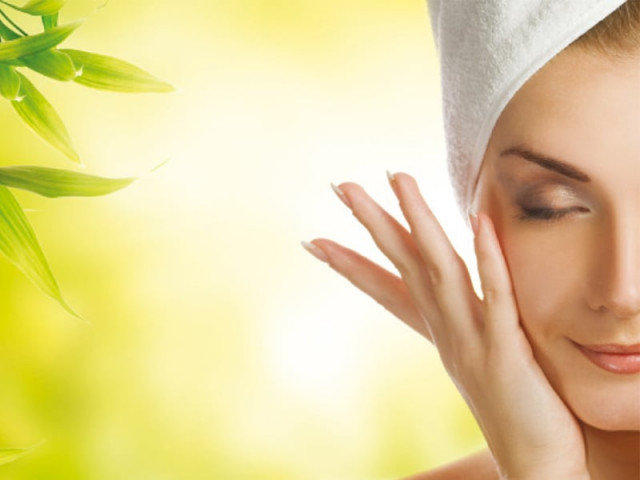5 winter beauty tips for combating dry skin
Read up on the ultimate advice for soothing your thirstiest parts from scalp to soles

PHOTO: FILE
Dull complexion
Dehydrated skin cells turn over more slowly, causing a buildup of dead skin, which hinders light reflection. Blood circulation also gets sluggish and soon enough, your summer-spring glow is gone and fine lines look more pronounced.
Solution: Bolster your beauty from the inside out by drinking lots of water and loading up on omega-3s (essential fatty acids found in foods such as fish and walnuts). “Omega- 3s boost hydration, so I recommend taking supplements to ensure you get enough,” says Doris Day, a clinical assistant professor of dermatology at New York University Langone Medical Centre. Your daily skin regimen should start with a cleanser followed by a cream or balm instead of a lotion. “They’re richer and better at holding water in the skin,” says Day, who recommends you check out the ingredients of your cream before purchasing. Creams must contain antioxidants (green tea or niacinamide), humectants (hyaluronic acid or glycerin), and emollients (nut butters or oils) to combat dry scaly skin. “These creams insulate the skin, which is key when you’re constantly going between the cold outside and the drying heat indoors,” says Day.
5 ingredients to avoid if you have dry skin
Lackluster hair
If we were to characterise winter worn hair, we’d probably depict it as brittle, dull, depressed, and hay-like. Plus, dry-hair side effects such as the dreaded static cling in the winters makes it extra hard to tame and manage, says Teca Gillespie, a scientist for Pantene.
Solution: Make conditioner your bff. But, make sure your conditioner includes silicones to lock down the outer cuticle layer and seal in moisture. Equally important are quaternary ammonium compounds (“quats”), which “leave hair soft and silky, and neutralise the static electricity that causes flyaways,” says cosmetics chemist Jim Hammer. Before buying any conditioner whatsoever, scan the label for quats such as cetrimonium chloride and behentrimonium chloride in the ingredients list.
Dry, itchy scalp
White flakes falling from Murree skies — glorious. White flakes falling from a dry scalp — quite gross. The urge to constantly itch and visible flakes can be symptoms of both dandruff (a condition caused by a yeast-like fungus) and dry scalp (run-of-the-mill dry skin), says Day.
Solution: Grab a hydrating shampoo and a moisture-infusing hair mask. If they don’t soothe your scalp after a week, celebrity stylist Kristan Serafino suggests using more intensive-care products, such as hair oil. Mustard oil, olive oil, argan oil and coconut oil are all beneficial. Use the oil that works best for your hair type. Part your hair down the middle and apply the oil to your exposed scalp. Make a new part every half-inch and massage the oil in as you go, until your scalp is saturated. Wash after an hour. If flakes still persist, you have dandruff. Switch to a medicated shampoo which specifically contains zinc pyrithione (the active ingredient that battles dandruff). It will kill the fungus, and stop the itching and flaking.
6 ways to prevent chapped lips
Cracked reptilian skin
Way too many hot showers, steamy baths and not enough body moisturiser can make your skin resemble a desert creature’s scaly shell. “Arms and legs have fewer oil glands, so they tend to be drier and scalier than other parts, especially in the winter,” says Day.
Solution: Milk does a body good — inside and out. The natural fats and lactic acid in your childhood favourite moo juice can soften skin, lightly exfoliate, and terminate irritation, says Regina Viotto, a skin-care specialist at the Paul Labrecque Salon and Spa in New York City. Draw yourself a nourishing bath by adding two cups of whole milk to warm — not hot — water. Soak for about 15 minutes, pat skin dry, and apply a rich body butter or thick cream to boost the benefits.
Parched hands and fissured feet
No matter how much lotion you slather up your hands and feet with, is the cold air still leaving you painfully dry? Worry not — soothing remedies for your hands and feet are sitting right in your kitchen, and uhm your bathroom.
Solution: Celebrity podiatrist Eric Reynolds recommends using antiseptic mouthwash to soften dry skin on your feet. Mix one part mouthwash to two parts water and soak your feet for 15 to 20 minutes. The mouthwash contains benzoic acid to help shed dead skin and ethanol to protect feet from bacteria and fungus. Also, make sure to wear comfy socks or slippers when walking around your house — this protects the soles of your foot from getting cracked and stiff. For a cheap alternative to that high-end cream, try coating dry feet and hands in full-fat yogurt. The lactic acid in yogurt acts as a natural exfoliant to gently remove dead skin while the fats restore moisture. For an extra boost, mix a teaspoon of raw honey into the yogurt before slathering on skin (it’s super hydrating). Leave the mask on for ten minutes before rinsing off.
Published in The Express Tribune, December 4th, 2015.
Like Life & Style on Facebook, follow @ETLifeandStyle on Twitter for the latest in fashion, gossip and entertainment.



















COMMENTS
Comments are moderated and generally will be posted if they are on-topic and not abusive.
For more information, please see our Comments FAQ